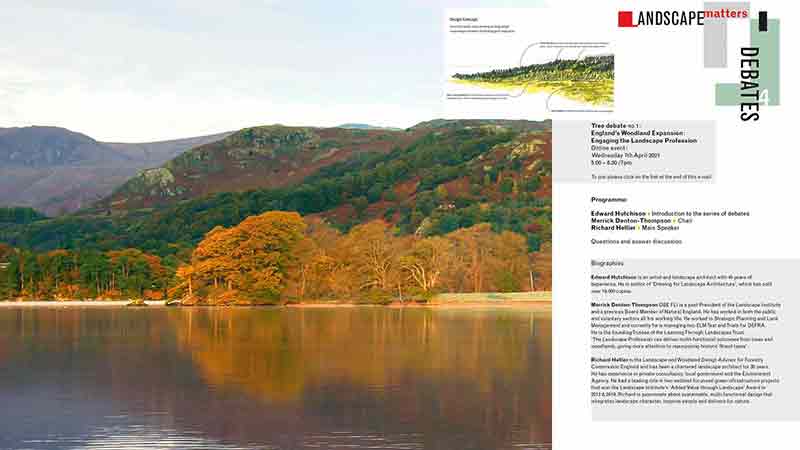UK Forestry and the work of the landscape architecture profession
UK landscape architect’s interest in forestry is centuries old. John Evelyn did not use the term ‘landscape architect’ but he published a famous book Sylva, or A Discourse of Forest-Trees and the Propagation of Timber in 1664, advocating and supporting extensive tree planting programmes. He hoped to do another book on the theory of garden design but did not complete it. A century later, picturesque theorists were greatly interested in forests and in the 1840s John Claudius Loudon, who I see as one of the key ‘fathers’ of landscape architecture, nearly bankrupted his family by producing and publishing his massive work Arboretum et fruticetum britannicum; or, The trees and shrubs of Britain, native and foreign, hardy and half-hardy, pictorially and botanically delineated, and scientifically and popularly described; with their propagation, culture, management, and uses in the arts, in useful and ornamental plants &c. His nineteenth century successors, calling themselves ‘landscape gardeners’ advised landowners on how to plant forests for the multiple objectives of game, timber and scenery. This happy mix of objectives was ended by scientific modernism. Following German practice, trained foresters, concentrated on the single objective of timber production.
In the 1940s the UK government sent Geoffrey Jellicoe to visit America and study the work of US landscape architects. He was particularly impressed by their work on roads and forests. He wrote about this and lobbied government ministers. This effort led to invitation to his friend, Sylvia Crowe, to become a consultant to the Forestry Commission. Her particular effort was to re-engage plantation foresters with scenic and recreational objectives. This led to salaried posts for landscape architects in the Forestry Commission. In the above talk, given by Richard Hellier, Landscape and Woodland Design Advisor with the UK Forestry Commission, to introduce a LANDSCAPEmatters debate on the role of the landscape profession in forest design, David Jacques asks how many landscape architects the Forestry Commission now employs. Richard’s answer is six, with a seventh waiting to take up a new post. The debate took place online on 7th April 2021.
The projects illustrated in Richard Hellier’s show that the FC are now doing a very good job of producing what Sylvia Crowe called Forest Design Plans (in her book on The Landscape of Forests and Woods, H.M. Stationery Office, 1978). I supported her call in a chapter for a book on Landscape planning and environmental impact design (Routledge, 1998) and am as pleased as I believe Dame Sylvia would have been to see what is now being done. My impression is that the plans Richard showed are for new forests or forest extensions. If this is so, the next stage is surely to produce equally good plans for the all the FC’s older woods and forests.
Richard Hellier relates that the climate change mitigation agenda is having a profound influence on the the Forestry Commission and is likely to lead to (1) a substantial increase in the UK’s tree cover (2) many new commissions for landscape architects. I hope he is right. This will require landscape planning as well as landscape design.

